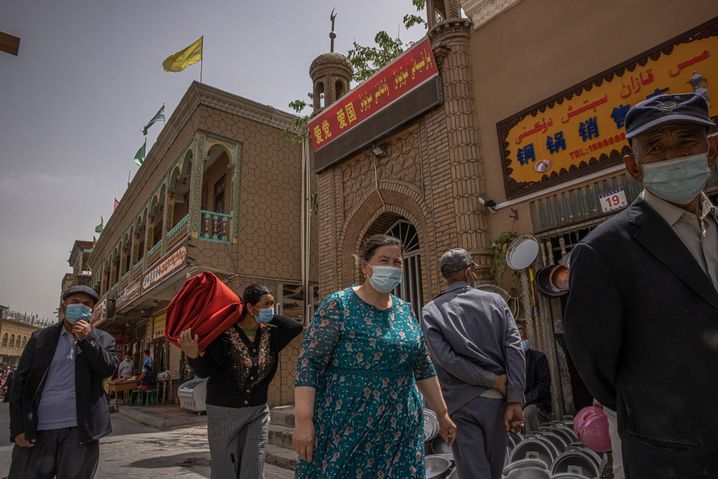In the Sinister Disneyland of Xinjiang: China's Ongoing Oppression of the Uighurs
May 27, 2021Now, with Xinjiang largely pacified in the eyes of Chinese officials, they are hoping to leverage the city’s potential. Kashgar is being developed into a mecca of tourism, a destination with an oriental flair. “It’s great, like Morocco,” says a visitor from the southwestern Chinese city of Guiyang. The old, mud-brick walls have disappeared behind a uniform coat of plaster, with walls now decorated with wagon wheels and amphoras. Tourists now wander through gates with pointed arches like in Baghdad and a city wall of concrete has been built on the clay cliffs. A Chinese temple with its curved roofline now graces the highest point of the old town. A tout tries to lure guests into a restaurant – dressed as the monkey king from “Journey to the West,” a classical novel of Chinese literature.
“I came for the spectacle. I think it’s great,” says one Chinese visitor as the Uighurs are dancing the Sema. He introduces himself as Yann and says that he studies philosophy in France. Because of the pandemic, though, he has taken a year off, which he is using for travel. By the way, he adds, “there will be a spectacle with a princess later in the old town.” As it turns out, it involves five princesses. They arrive on camelback, dressed in colorful costumes, before they perform a dance – as they do every day.
Uighurs as obedient extras in a portrayal of their own lives, a religion without passion or youth, a culture reduced to Disney-esque exoticism, easily digestible for the masses: This version of Uighur existence appears to be the one desired by China’s leaders.




